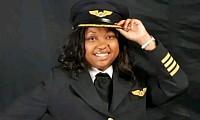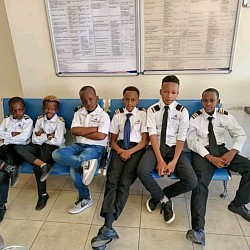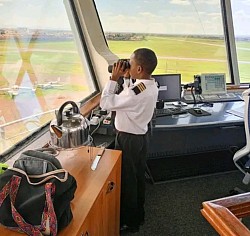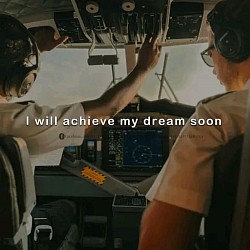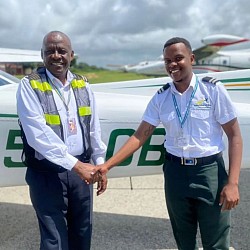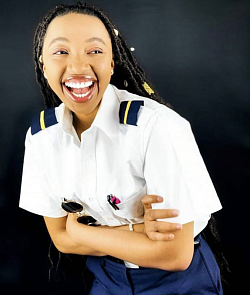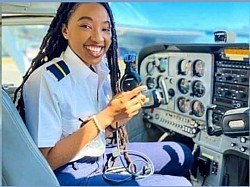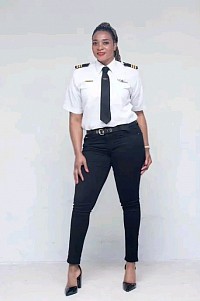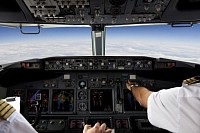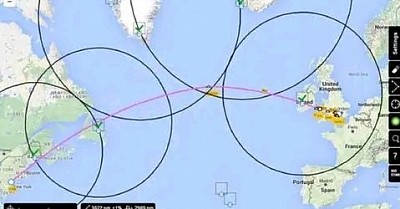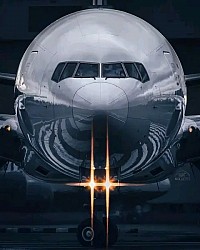Essential Focus Techniques for Aspiring Pilots
Success Stories in Pilot Training
- How I Became a Pilot.
- My Astonishingly Quick Pilot Training
- January 17, 2023 story from Stephen.
- Zero hours to fully Qualified Pilot in less than two Years
- Approximately reading time-9 minutes
"In this post, I will talk about my astonishingly fast journey from zero flight hours to being a fully qualified commercial pilot in just over 18 months and how I received my first airline job within 5 minutes of being signed off and qualified.
Let’s get into how I conducted my pilot training and the details around it.
Commercial Pilot Training. A320 Cockpit
I Have been always wanted to be a Commercial Pilot
I’m not sure where it came from, but I have always wanted to be an airline pilot. Since I was old enough to remember, I have always had a passion for aviation.
Unlike some, I didn’t spend my time plane spotting or joining the air cadets etc. Not because there is anything wrong with these things, but mainly because my life and free time were so busy playing sports.
However, I was fascinated with airports and aircraft whenever we went on holiday or travelling. This interest never went away and followed me into my early adulthood.
I would be lying if I said the idea of travelling for a living wasn’t part of the reason I wanted to be a pilot. However, I knew this would only be the case for some airlines.
The well-paid pilot salary also attracted me to this job.
- How Old was I when I started my Pilot training?
Once I was old enough to be serious about a career path, I decided that being a pilot was the only career that interested me.
This helped me pick my A-level exams (these are the exams you take in the UK when you are between the ages of 16-18 for my US readers).
I decided to study physics, maths, IT and biology. I knew physics and maths would help me with my pilot training. However, I didn’t pick these A levels to become a pilot. I did, too, have an interest in these topics.
It would be unwise to pick subjects just for pilot training. It’s better to pick subjects where you will achieve higher grades and those you enjoy studying unless your pilot training school/airline scheme requires exact qualifications.
I finished my A levels in the summer of 2013 and then enrolled in my pilot training in January 2014 at 18 years old.
- My commercial pilot training journey
- Where did I do My Pilot Training?
I studied with CTC Aviation, now known as L3 Academy and enrolled on the Integrated pilot training route.
When I looked at how to become an airline pilot, this course offered me the route I wanted.
They had multiple partner airlines, a great history of placing pilots with employment at the end of their pilot training and ticked all of the boxes when it came to my research in becoming an airline pilot.
For a large amount of money, I was able to train to become a commercial pilot within 18 months and also had the pleasure of living in New Zealand for nine months.
- How did I find out how to become A Pilot?
A pilot throwing a paper airplane, signifying how to become a commercial pilot.
Research, and lots of it.
Sadly, there was no guide available to me at the time, like the extensive guide I wrote on how to become a pilot.
However, I was lucky enough to have a supportive family who assisted me in my research. The most beneficial recourse we had was open days. We attended many open days throughout the six-month period that we were searching for pilot schools.
During these open days, we gathered a considerable amount of information. The essential information was my flying school’s awe-inspiring pilot placement success rate.
- They had placed hundreds of graduated pilots with airlines throughout their history. They also had a lot of commercial airline partners. Both of these facts meant that the chances of employment upon completing my pilot training were very high, which was my priority!
- How Long does Pilot training take? Worldwide Answer
I started my pilot training in late January 2014 and was employed by an airline and passengers by January 2016.
This means that in under two years, I was qualified as a commercial pilot, had been offered a job, completed my Type Rating and training and successfully transported passengers as a commercial airline pilot.
- Truly incredible, and I’m very lucky that I was in the right place at the right time regarding my employment. I waited just three minutes in the flight schools ‘holding pool’ (where we were put into and then recruited by airlines in a first in, first out process).
- How much did It cost for me become a Pilot?
Pilot sat on a stack of dollar bills and cash.
- How much does It cost to become a Pilot?
A lot of money is the short answer.
Including the integrated package, the living expenses, my Type Rating and everything else associated with the cost of becoming a pilot, my total was likely to be around £130,000.
I appreciate this is a tremendous amount of money, and many pilots (myself include) will spend their first decade as commercial pilots
- How difficult was the class 1 medical?
Not very difficult at all.
The Class 1 Medical Certificate was a considerable worry in my mind. I was fit and healthy, as you would expect an 18-year-old to be. However, I was worried that something might come up and ruin my chances of being a pilot,"said Stephen.
@Pilot Success Network team News
Motivating stories
STRENGTH OF A WOMAN ❤️✈️✈️✈️
Hi guys meet Captain Irene Koki Mutungi ,
Africa's pioneering Boeing 787 Dreamliner Captain and the trailblazing first female Pilot and Captain of Kenya Airways.
She made history by commanding the inaugural father/daughter flight and leading the first all-female flight crew in Africa. Captain Mutungi's aviation journey began at a young age, inspired by her father, a seasoned pilot at Kenya Airways.
At just 17, she embarked on her flight school odyssey at Nairobi's Wilson Airport, earning her Private Pilot License. Continuing her pursuit of excellence, she obtained her Commercial Pilot License from the Federal Aviation Administration in the United States.
Returning to Kenya, Captain Mutungi joined Kenya Airways, etching her mark as the airline's inaugural female pilot. Over two decades later, she remains a dedicated part of the national carrier.
Notably, she is the first female in Africa certified as a Captain for the Boeing 787 Dreamliner—a testament to her remarkable achievements and commitment to breaking barriers in aviation.
Reflecting on her remarkable career, Captain Irene Koki Mutungi shared, "My first flight was just a few days before I turned 18, and it was the most amazing experience. My most memorable flight was the one I shared with my father. It marked his retirement from the airline, and he chose to conclude his illustrious career with a flight alongside me—a truly unforgettable moment."
Let's unite in celebrating Captain Irene Koki Mutungi's extraordinary journey and her groundbreaking contributions in aviation
@Pilot Success Network team News
Inspiring Aspiring Pilots Daily
- "Sometimes, it only takes one little push and motivation to change a person’s life forever.
Sharing my journey with these aspiring pilots was a reminder that challenges are the fuel for dreams to take flight. Inspiring the next generation to reach for the skies.✈️
Calling all aspiring pilots! 👨🏻✈️👩🏻✈️"
From Genesis Bernado
@Pilot Success Network team
Motivating story
From Waitress to Cabin Crew to Pilot.
Meet Precious Sibalo, a Commercial Pilot from Zimbabwe. Before going to flight school, Precious previously worked as a waitress and then as a Cabin Crew with Qatar Airways.
No, she wasn't very good in mathematics in secondary school, but today, she holds an Airline Transport Pilot License (ATPL) from 43 Air School, South Africa.
Precious is currently working on her Flight Instructors rating in South Africa.
@Pilot Success Network team
True story
KENYA 🇰🇪
DREAMS ARE VALID
"Brothers in Flight: Kenyan Pilots Alex and Alan Soar High with the Same US Airline
From a young age in Kenya, twin brothers Alex and Alan possessed a deep desire to become pilots that surpassed the typical fascination children have with planes and pilots
Their dream received a tremendous boost when they immigrated to the United States at the age of 13. Presently, both twins are employed by the prestigious US airline, Alaska Airlines. Alex was the first to join the company, and in July 2022, Alaska proudly announced the hiring of Alan." By Benjamin
@Pilot Success Network team
Emergency Landing Procedures for Transatlantic Flights
WHERE WOULD A FLIGHT BETWEEN NEW YORK AND LONDON DO AN EMERGENCY LANDING IF IT’S ENGINES FAIL IN THE MIDDLE OF THE ATLANTIC?
If all of its engines fail, it will land somewhere in the middle of the Atlantic. There are many possibilities.
Now, if it’s a twin-engined aircraft, and ONE of its engines fail, it will proceed to the nearest ETOPS (ICAO: *Extended Twin Operations) *Alternate Airport associated with the closest ETP (Equal Time Point). If it’s lucky enough to have more than two engines, and loses power on one engine, it may continue to its destination, fuel depending.
Assuming it’s a twin, and one engine fails over the North Atlantic. It will be subject to ICAO [ETOPS](https://en.m.wikipedia.org/wiki/ETOPS) requirements. ETOPS 180 (minutes) is typically used for flight planning.
It will likely be flying one of the random [North Atlantic Tracks](https://en.m.wikipedia.org/wiki/North_Atlantic_Tracks) (NATS) routes that are generated daily, the routing dependent upon on prevailing winds aloft, turbulence, and weather systems. Prior to departure, the aircraft’s own airline will generate a flight plan, which will be based on an expected NATS track over the Atlantic. The tracks have letters, such as Track A, B, C, etc. They generally parallel each other, and are located 10 degrees of latitude apart, but may be reduced to 5 degrees of latitude separation for heavy traffic volume. The Navigational points along a given track will be spaced 10 degrees of longitude apart.
For example, NATS Track F (Foxtrot) will be defined as (Easterly Direction): TUDEP N52W050 N53W040 N53W030 N52W020 DINIM. The controlling agencies on the NATS will generally be GANDER OCA until 030W, then SHANWICK OCA.
The flight plan will generally include 3 alternate airports, so that the aircraft is never more than 180 minutes of flying time from at least one of those airports. The chosen airports must meet the reduced weather forecast criteria for an aircraft flying an engine out approach. There will usually be two points generated along the assigned NATS routing called ETP’s, which are the points at which you will be within 180 minutes of the airfield associated with that geographical position.
For a flight from New York’s JFK to London’s Heathrow Airports, we will typically use Gander (CYQX) or St. John’s (CYYT) Airports for the first ETOPS airfield, Keflavik (BIKF) or Lajes (LPLA) for the middle portion of the flight, and Shannon (EINN) for the final portion. These can change for weather, winds, or geographical location of the NATS.
This is a North Atlantic transoceanic plotting chart with the relevant ETOPS information plotted on it. Once it has been flight-prepped, it is known as an “Oceanic Orientation Chart”. Paper versions are becoming extinct, replaced with electronic versions, usually a Jeppesen Chart displayed on an electronic tablet, or on the aircraft’s own Moving Map Horizontal Situation Display.
* An aircraft traveling East, or left to right, would divert to CYYT (St. Johns) prior to the first vertical line (located at the first ETP (equal time point)).
* *Note the triangle drawn at the top and bottom of the vertical ETP line. It points towards the divert airport, and has the appropriate divert airport ICAO code written next to it.
* After the first line, the aircraft would divert to Lajes (LPLA). At the second vertical line drawn on the planned route line, the aircraft would divert to Shannon (EINN).
* At each ETP line, the aircraft will be equal flying time between the two airports associated with the ETP.
@Pilot Success Network team News
The Economics Behind Pilot Pay
WHY DO AIRLINE PILOTS GET GOOD PAY?
At a glance, a pilot’s job looks very easy. You get into the cockpit, greet the passengers as they board your aircraft. Then you take-off, engage the autopilot and snooze off for a bit. When you are about to land in your destination, you announce what is the weather like on the ground. As passengers disembark from the aircraft, you tell them to have a nice day and that is it. Your day is over and you’re free to roam the streets of the city you just landed in.
That does indeed sound like a job that everyone could potentially do. In addition to having a job that is very easy, airlines also pay pilots a big sum of money.
However, is it really that easy like it sounds on paper? Might there be actually legitimate reasons why do airlines pay pilots one of the biggest wages out there?
There are reasons. Quite a few actually. So, let’s dig deeper and find out why pilots earn so much!
10. PILOTS PHYSICAL CONDITION
Pilots have to be in the best physical condition. Their eyesight has to be near-perfect. Hearing loss is also a big no-no for pilots.
Altogether, the pilot needs to be very healthy. His lungs, heart, blood pressure, nervous system needs to be as healthy as possible. Pilots also have to renew their Class 1 medical certificate every 12 months. If they are over 40 years old and work in commercial aviation that needs to be done every 6 months. When a pilot is over 60 years old, no matter his activity, he needs to renew his medical license every 6 months as well.
(Pilot Medical Licence, medical doctors are pilots worst nightmare)
9. LONG TRAINING PERIOD TO OBTAIN A COMMERCIAL PILOTS LICENSE
No matter which way you go about on achieving the goal of flying for commercial airlines, the road is tough. You just cannot hop into the cockpit after a few hours of flying in the air or in the simulator.
The process is long. A pilot has to pass multiple (14 to be exact) exams, obtain a medical license and pass flight training. Additionally, a pilot has to have multiple ratings and courses, such as multiple engine instrument rating and an instrument rating.
And even then, pilots still need a type rating to operate an aircraft, for example, a Boeing or an Airbus aircraft.
So, the process to realize your dreams and become a pilot is definitely tough.
(A Flight Simulator For Pilots To Train)
8. PILOT DEMAND IS HIGH
Nevertheless, airlines need pilots. Constantly.
Passenger numbers are growing every year and to keep up with the demand, airlines regularly order new aircraft. That is why new pilots are constantly required by airlines and pilot shortages are nothing new to the aviation industry.
So much so, that a year ago Emirates canceled flights because they did not have enough pilots to operate them.
Even then, pilots are also retiring. Thus in addition to increasing the number of pilots, you also have to replace the ones that are leaving your company.
The crazy demand for pilots creates a very cut-throat market for pilots. That is why airlines offer pilots attractive salary packages, just so that a pilot does not join their competitors.
(Pilot shortages forced some airlines to cut flights)
7. A PILOTS LICENSE IS EXPENSIVE
The matter of the fact is that it is insanely expensive to become a pilot. Getting a Commercial Pilots Licence is really expensive even if you try to obtain a license through various flight schools or airline academies.
Because of this reason, pilots need to know that they will be able to repay their debts once they start working for an airline. If a pilot has just acquired his pilot’s license, but he is not able to repay the loans that he needed to obtain that license, then what is the point of going into huge amounts of debt? Sure, flying is fun, but not having a ton of debt is fun as well!
6. LIFESTYLE
Although roster options vary between airlines, the daily lives of pilots are very different from those that work a usual 9 to 5 job.
Airlines cannot guarantee that pilots won’t miss family holidays, anniversaries or any other celebrations. If a pilot has kids, he needs to be prepared mentally to handle the fact that he’s not going to be home a lot. Creating a family is very hard as well, especially if a pilot works on long-haul routes.
Airlines can also force pilots to move around countries (in Europe, for example).
The upside of this is, of course, the high wages.
5. MENTAL HEALTH
Being physically fit is important. But even more importantly, a pilot must be fit mentally as well.
Making proper decisions and thinking straight under stressful conditions might be a daily routine for someone working in the cockpit.
And if a person handles tense situations poorly, he or she might not be the best candidate to work as a pilot, as the pilots have a lot on their hands when flying a plane full of passengers. Not only a pilot might have to calm down the passengers, but his fellow crew members as well.
4. AVIATION RULES AND LAW
Aviation is no easy matter, especially when you’re working as a commercial pilot. There are a lot of rules and procedures that you have to follow even before the flight takes off.
Pilots have to go through numerous pre-flight checks. When aircraft fly to international destinations or to other continents (as the aviation laws in Europe are standard throughout every country) aviation laws also differ. Because of this, pilots have to have a lot of theoretical knowledge in addition to their practical skills when flying the aircraft.
Even after a flight, there are a lot of forms and papers that a pilot needs to fill out.
This again comes back to the route of obtaining a commercial pilots license, making it more complex. Of course, the issue is that when you violate the law, the repercussions might be very harsh.
3. EMERGENCIES
If you follow various aviation pages on Twitter or like to observe websites such as flightradar, emergencies are a daily occurrence in aviation.
Whether they are small emergencies like the lack of water for tea and coffee or serious medical emergencies, pilots have to control the situation and act quickly. Time is of an essence, especially when it is a matter of life and death.
For example, if a baby is born on board!
2. NO MARGIN OF ERROR
Every move a pilot takes requires precision. It is as if a pilot is a surgeon because the cost of a wrong move can be quite costly.
To illustrate, aircraft have a limited amount of fuel. Meaning you can waste so much fuel before it can become a very dangerous situation.
Airports and air traffic are also very tightly orchestrated objects, where any kind of anomaly can result in dire consequences. Pilots have to follow the conductor of the opera that is air traffic. Examples of aircraft colliding on the tarmac are not very rare and they definitely do happen.
1. COST OF A WRONG DECISION
Most importantly and the thing that can cause the most stress to pilots when they are working is the cost of a single mistake.
For one thing, when an airline loses money due to human error, in the grand scheme of things that does not matter as much. However, a pilot making a mistake, whether it would be down to fatigue or lack of concentration which leads to a loss of life is much more tragic.
Sure, a pilot’s job might look casual to some, as you take-off, kick the aircraft into autopilot and just enjoy the view. Nevertheless, there are a lot of things that are going on behind the scenes that pilots do to ensure the safety and well-being of every passenger that is on an aircraft.
To sum up, do not take pilots for granted. These are very highly skilled and trained individuals that not only paid a lot of money to do the job they love but also acquired a lot of knowledge during the process.
And these are the reasons why airlines pay pilots so much.
@Pilot Success Network team News
Engine Efficiency for Airbus A320
WHICH ENGINE IS BEST COMBINATION WITH AIRBUS 320?
The A320 has a really versatile airframe, and hassle free Avionics which have made it commercially so successful. Its been flying for the past 25 years almost and is here to stay for a long time. The best airframe engine combination of A320 is with CFM 56–5B. I say it because its the most reliable and maintenance friendly option. However running costs may be a bit high than the IAE.
Other combinations include IAE V2500 series which ran into serious issues of Rotor drum corrosion, however it is commercially quite successful.
Recently two more options, known as the NEO(New engine option) are available. They include PW1100GJM and the CFM leap. Both of them are Ultra High By- Pass ratio gs turbine engines and claim to be more fuel efficient and envirnment friendly, however these claims are yet to be proven.
So until the time that these engines prove their worthiness, my favoured combination would be A320 with CFM 56-B engines and Honeywell 131–9 APU.
@Pilot Success Network team News
